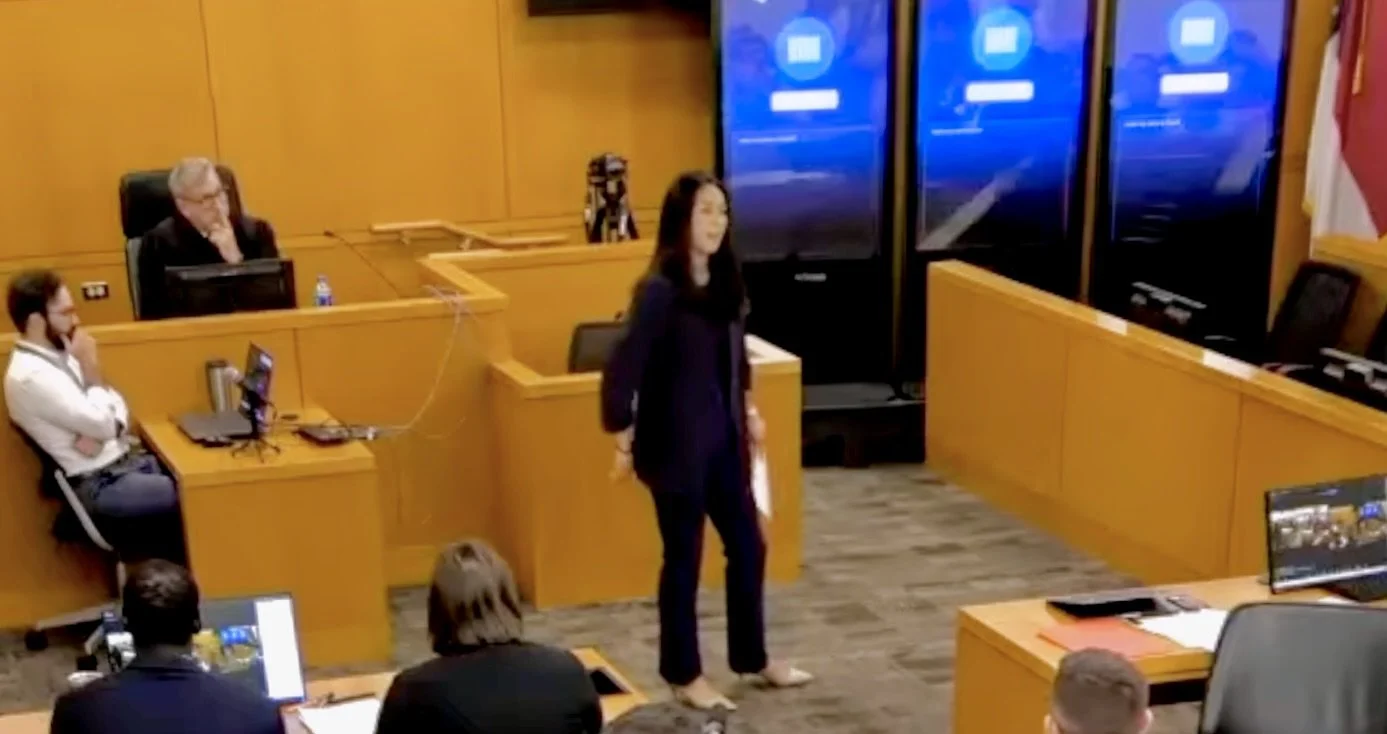Mon, Dec 1 - Standing Up for Press Freedom
What: Panelists will offer firsthand accounts of courage, integrity, and the ongoing efforts to support transparency in government.
Who: Lucy Dalglish, former executive director of the Reporters Committee for Freedom of the Press; Jamie McIntyre, Washington Examiner; Idrees Ali, Reuters; Dan Lamothe, The Washington Post; Olivia Logan; DoD Communications Specialist.
When: 7 pm, Eastern
Where: Zoom
Cost: Free
Sponsors: The Society of Professional Journalists & the Merrill College Journalism Alumni Network
More Info
Tue, Dec 2 - The Formula for Social Media Success
What: Our simple but comprehensive social media workshop will help you learn how to prioritize things and give you a clear formula to be successful on social media.
Who: Ray-Sidney Smith, Digital Marketing Strategist, Hootsuite Global Brand Ambassador, Google Small Business Advisor for Productivity, and Managing Director of W3C Web Services.
When: 10 am, Eastern
Where: Zoom
Cost: $45
Sponsor: Small Business Development Center, Duquesne University
More Info
Tue, Dec 2 - Vibe Coding for Journalists
What: By attending this lesson, you'll learn: How vibe coding works and how it is being utilized by journalists and non-journalists alike; How vibe coding can help support your own journalistic work; What vibe coding platforms can be used to help accomplish for your goals.
Who: Arizona State University’s Walter Cronkite School of Journalism Professor Emerita Retha Hill.
When: 12 pm, Eastern
Where: Zoom
Cost: Free
Sponsor: The New England First Amendment Coalition
More Info
Tue, Dec 2 - Making Rejection WORK For You
What: Our speaker will offer both practical and psychological techniques for dealing with the "No, Nope and No Way" messages that writers face all too often. Discover what works for you and how planning your response to ANY prospective or actual setback leaves you more in control of not only your writing life, but also your personal life.
Who: Award-winning author Laurie Schnebly Campbell.
When: 1:30 pm
Where: Zoom
Cost: Free
Sponsor: Author Learning Center
More Info
Tue, Dec 2 - B2B Media SEO Playbook: AI Prompts for SEO
What: This session will walk you through the most effective ways to integrate AI tools into your SEO workflow. From refining headlines and decks to content structure and other optimization strategies, you’ll see how Generative AI can support (not replace) your editorial expertise.
Who: Erin Hallstrom, the director of content operations and visibility for Endeavor Business Media; Alexis Gajewski is the associate director or newsroom operations and development for Endeavor Business Media.
When: 2 pm, Eastern
Where: Zoom
Cost: Free
Sponsor: American Society of Business Publication Editors
More Info
Tue, Dec 2 - What’s Next for Using Data to Support Students?
What: How will emerging technologies like generative AI change student-success initiatives? Discover how institutions are pushing the boundaries of data and analytics to improve student outcomes. Understand how emerging technologies — including generative AI — are reshaping student-success strategies. Explore best practices for maintaining data privacy, security, and ethical use.
Who: Ian Wilhelm Deputy Managing Editor The Chronicle of Higher Education; Kate Giovacchini, Executive Director, Digital Innovations, Trusted Learner Network, Arizona State University; Tiffany Mfume, Associate Vice Provost for Student Success and Retention Initiatives, Johns Hopkins University; Mark D. Milliron, President & CEO, National University.
When: 2 pm, Eastern
Where: Zoom
Cost: Free
Sponsor: Chronicle of Higher Ed
More Info
Tue, Dec 2 - The Coming Revolution: Equity in the Age of AI
What: Join us for a forward-looking and thought-provoking conversation about how we keep equity front and center in an era of rapid technological advances. Reporters will gain story ideas, insights and crucial context for covering the coming changes that will remake health care.
Who: Dr. Joseph R. Betancourt is the president of the Commonwealth Fund; Dr. Tina Hernandez-Boussard is a professor of medicine at Stanford University; Katie Palmer is a health tech correspondent at STAT.
When: 2 pm, Eastern
Where: Zoom
Cost: Free
Sponsor: Annenberg School for Communication and Journalism at the University of Southern California
More Info
Tue, Dec 2 - The Art of the Possible In Action: Turning Data into Decisions
What: This session dives into creating a unified data ecosystem using Microsoft Fabric and Synapse Analytics, empowering your organization to make informed decisions. We’ll also cover essential practices in data protection and governance to ensure that your data is accessible, understandable, and responsibly managed.
Who: Ryan Harrington, Managing Director of the Data Innovation Lab; Mat St. Cyr, Applications Development Manager; Dharneesh Jayaprakash, Tech Impact Data Engineer.
When: 2:30 pm, Eastern
Where: Zoom
Cost: Free
Sponsor: TechSoup
More Info
Wed, Dec 3 - Creating AI Tools for Journalists
What: From article to algorithm-ready video – converting news or research into scripts tailored for TikTok and Instagram algorithms, with an in-app teleprompter. Cutting production time in half – streamlining audiovisual storytelling for journalists moving from text to video. Fighting disinformation with engagement – leveraging AI-driven scripting to promote trustworthy journalism in social media spaces.
Who: Sophia Smith Galer, the 2024 Georgina Henry Award Winner and the founder of Viralect.
When: 7:30 am, Eastern
Where: Zoom
Cost: Members: £10; Nonmembers: £20
Sponsor: Women in Journalism
More Info
Wed, Dec 3 - How Nonprofit Professionals Can AI-Proof Their Careers
What: Join this free 20-minute webinar to become AI-literate in the concepts most immediately to impact your career so you can start the process of upskilling now and thrive in your career for years to come.
Who: Heather Mansfield, Founder of Nonprofit Tech for Good.
When: 1:00 pm, Eastern
Where: Zoom
Cost: Free
Sponsor: Nonprofit Tech for Good
More Info
Wed, Dec 3 - Future-Ready Data Protection: Securing Modern Data Ecosystems in an AI-Driven World
What: This session explores the critical shifts reshaping how organisations must protect sensitive information in a boundaryless digital world. We will break down the top risks, the essential capabilities of modern security architectures, and the must-have tools for protecting data across endpoints, cloud platforms, and AI workflows. From zero trust to automated posture management and advanced data discovery, you’ll learn what’s required to stay ahead of adversaries and maintain compliance. Whether you’re modernising your security program or building one from the ground up, this talk equips you with the insights needed to create a future-ready data protection strategy for 2025 and beyond.
Who: Pankul Chitrav, Application Release Engineer, TD Bank.
When: 1 pm, Eastern
Where: Zoom
Cost: Free
Sponsor: TechTarget
More Info
Wed, Dec 3 - ChatGPT for transitioning veterans
What: OpenAI employee and Army veteran David Sperry will walk through how servicemembers can use the ChatGPT to simplify the challenging transition from military life, back into the civilian world. David shares his story and walks viewers through practical examples and resources to get started today.
Who: David Sperry, AI Adoption Manager, OpenAI
When: 2:30 pm, Eastern
Where: Zoom
Cost: Free
Sponsor: OpenAI Academy
More Info
Wed, Dec 3 - Turning Complex Climate Research Into Compelling Visual Narratives
What: An inside look at the Synergy Project, a multi-year collaboration between Art League RI, the Woods Hole Oceanographic Institute, and the University of Rhode Island which formed scientist-artist pairs to create a common language for science communication. Attendees will meet two Synergy pairs, whose projects transform cutting-edge research revealing how analogy, personification, and abstract art can help audiences grasp complex, unseen climate and ocean processes.
Who: Noah Germolus, environmental chemist at University of Hawai'i at Mānoa; Laurie Kaplowitz, classically-trained painter and Chancellor Professor of Fine Arts at University of Massachusetts Dartmouth; Clarissa Karthäuser, marine microbiologist at Woods Hole Oceanographic Institution Heather Stivison, award-winning visual artist and Chairman of the Board of South Coast Artists, Inc.
When: 3 pm, Eastern
Where: Zoom
Cost: Free
Sponsor: Metcalf Institute and Solutions Journalism Network
More Info
Wed, Dec 3 - Satellite data for journalists: turning Earth images into stories
What: This workshop will focus on the Copernicus Land Monitoring Service, exploring its datasets and applications. The specific tools that will be presented and used during the session are the Copernicus Data Space Ecosystem, which offers immediate access to a vast amount of open and free Earth observation data from the Copernicus Sentinel satellites, and the CLMS Data Viewer, which allows users to visualise and interact with CLMS products directly. The webinar is designed to bring the world of environmental journalism closer to Earth observation technology. Through presentations and practical examples, participants will discover how to turn satellite data into evidence-based journalistic stories.
When: 9 pm, Eastern
Where: Zoom
Cost: Free
Sponsors: DG Joint Research Centre of the European Commission, Copernicus Land Monitoring Service & the European Journalism Centre.
More Info
Thu, Dec 4 - Integrating Media and Information Literacy in Media Organisations
What: This session will focus on how newsrooms can use UNESCO’s Multimedia Toolkit to strengthen Media and Information Literacy in everyday practice and improve the quality and trustworthiness of their content. Participants will also be introduced to ready-to-use tools from the UNESCO Toolkit, including clear steps, templates, and examples that can be implemented straight away. The session aims to help media professionals strengthen their newsroom workflows and support a more informed public.
Who: Adeline Hulin, Head of Media and Information Literacy and Digital Competencies at UNESCO; Catherine Mackie, Training and Communications Editor at the Thomson Foundation.
When: 2 am, Eastern (3:00 pm, Kuala Lumpur Time)
Where: Zoom
Cost: Free to members
Sponsor: The Asia-Pacific Broadcasting Union
More Info
Thu, Dec 4 - Elevate Your Interview Skills in the New Year
What: We will review how authors can prepare and deliver great interviews in the New Year. We will discuss the “Dos and Don’ts” of setting up an interview and arranging your media message in advance.
Who: Lindsey Gobel, a freelance publicist and communications professional with over 15 years of experience.
When: 10:30 am, Eastern
Where: Zoom
Cost: Free
Sponsor: Author Learning Center
More Info
Thu, Dec 4 - Legal Rights and Risks for Journalists Covering Immigration Enforcement
What: Our speaker will give journalists concrete, legally grounded strategies for gathering the news — especially when interacting with law enforcement. Based on the Reporters Committee for Freedom of the Press’s trainings, the workshop will help journalists plan ahead, make informed decisions in real time, and protect themselves legally in unpredictable environments.
Who: Jennifer Nelson Director, Pre-Publication Review & Journalist Support, Reporters Committee for Freedom of the Press.
When: 2 pm, Eastern
Where: Zoom
Cost: Free
Sponsors: Online News Association & the International Women’s Media Foundation
More Info
Thu, Dec 4 - Virtual PitchFest
What: This session will give independent journalists the chance to pitch directly to editors at leading health publications.
When: 2 pm, Eastern
Where: Zoom
Cost: Free
Sponsor: Association of Health Care Journalists
More Info
Thu, Dec 4 - What It Takes to Lead in the AI Era
What: In this virtual forum, we’ll explore how institutions can responsibly and ethically meet the moment. With insights from a recent survey, we’ll discuss how colleges are: Working to infuse their operations with AI tools; Building guardrails to avoid the pitfalls associated with the technology; Proposing ways to evaluate student learning; Mapping ways to pay for AI transformation.
Who: Ian Wilhelm, Deputy Managing Editor The Chronicle of Higher Education; Chris Mattmann, Chief Data & Artificial Intelligence Officer, UCLA; Amarda Shehu, Vice President and Chief AI Officer, George Mason University; Jeff Young Host Learning Curve podcast.
When: 2 pm, Eastern
Where: Zoom
Cost: Free
Sponsor: Chronicle of Higher Ed
More Info
Thu, Dec 4 - Publish More with AI to Drive Audience and Revenue Growth
What: Learn why publishing more, more often is now the strongest driver of audience growth. See new AI tools that turn raw video into publish-ready stories in minutes. Watch how AI can multiply your newsroom’s daily output — without adding staff. Discover which story types (briefs, recaps, explainers, updates) build habit and loyalty fastest Leave with a clear, actionable plan to grow audience and revenue in 2026.
Who: Anntao Diaz, one of the industry’s most influential voices on audience growth. After 15 years at Google leading News Consumer Insights and Realtime Content Insights, he helped hundreds of newsrooms understand what truly drives loyalty and engagement. Now at Nota, he’s applying that expertise to next-generation AI — and will explain why publishing “more — and smarter” is now essential.
When: 12 pm, Eastern
Where: Zoom
Cost: Free
Sponsor: New England Newspaper & Press Association
More Info
Thu, Dec 4 - Beyond the Headlines: Canadian Freelance Journalist Report from China
What: Join us for an eye-opening panel discussion as Canadian freelance journalists share first-hand insights from their recent trip to China. From AI and megaprojects to trade diplomacy and Chinese media narratives, we explored where Canada–China relations may be heading — and why freelancers must tell this story.
Who: Owen K. Schalk, a writer and columnist at Canadian Dimension magazine; Maryam Razzaq, a Senior Reporter with the Daily Scrum News; Raul Burbano, Canadian Freelance Union.
When: 7:30 pm, Eastern
Where: Zoom
Cost: Free
Sponsor: Canadian Freelance Union
More Info
Thu, Dec 4 - Case Teaching in the Age of AI: Deepening Learning with AI as a Thought Partner
What: This session brings together faculty who are actively shaping how AI supports case teaching, from content creation to innovative in-class applications. Panelists will share: How to design prompts that spark deeper analysis and engagement; Ways to extend cases through role plays, simulations, and “what if” scenarios Approaches to adapt content for different learners and contexts; Ideas for balancing AI tools with the human judgment that defines the case method
Who: Tawnya Means, Founding Partner & Principal Inspire Higher Ed; David Wood, Lecturer, Operations Management Ivey Business School.
When: 11 pm, Eastern
Where: Zoom
Cost: Free
Sponsor: Ivey Publishing
More Info
Fri, Dec 5 - AI Litigation Update
What: We will explore the latest and most impactful AI litigation that affects authors, libraries, archives, and museums.
When: 12 pm, Eastern
Where: Zoom
Cost: Free
Sponsors: Authors Alliance & OCEAN (Open Copyright Education Advisory Network)
More Info
Fri, Dec 5 – The Impact of AI on the Newsroom
What: How are journalists using AI and what direction is it taking in the newsroom? Will it affect basic reporting or even eliminate jobs? What AI skills are hiring managers looking for and what can you do while still in school to enhance your AI marketability? These topics and more will be addressed by our panel of journalists and news managers.
Who: Francesco Marconi, Co-founder Applied XL & Computational Journalist; Gina Chua, Semafor, Executive Editor at Large; Dylan Freedman, The New York Times, A.I. Projects Editor; Matilde Baggio, POLITICO, Newsroom Strategy Editor.
When: 1:00 pm, Eastern
Where: Zoom
Cost: Free
Sponsor: Washington Press Club Foundation
More Info
Fri, Dec 5 - The AI Powered Classroom
What: This talk is designed for educators to explore best practices and practical ways you can utilize AI in the classroom. Then, we'll be joined by for a live Q+A answering your questions. By the end of this session, educators will leave with practical tools, classroom-ready strategies, and a clear, inspiring vision for how AI can meaningfully amplify their practice.
Who: Casey Cuny, 2024 California Teacher of the Year; OpenAI's Fred Fisher.
When: 5 pm, Eastern
Where: Zoom
Cost: Free
Sponsor: Open AI Academy
More Info


